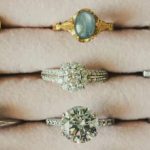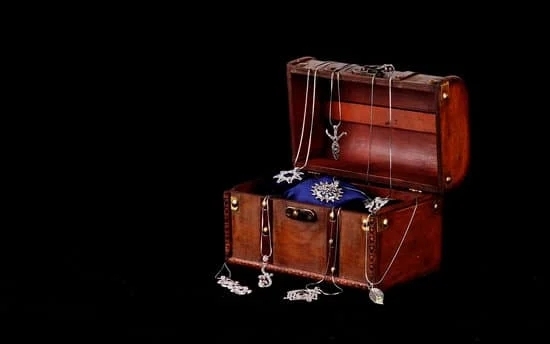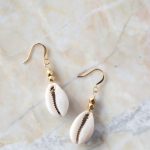The history of Egyptian jewelry dates back to antiquity, over 5,000 years ago. It is believed that Egyptians developed some of the earliest forms of jewelry and continued to refine these techniques throughout their great civilization’s long reign. Ancient Egyptian Jewelry was used primarily for ornamentation but also had protective and religious significance.
This form of artwork provided people with a medium to communicate royalty or status and identify members of the same family or tribe. This body adornment was crafted using simple tools and materials such as bronze, silver, gold, colorful glass beads, clay beads, animal teeth or bones, shells and faience (glazed pottery).
Ancient Egyptian jewelry was worn by both men and women but was often tailored differently according to their respective ages and gender roles within society. For example, older Pharaohs were adorned with symbols of power whereas younger pharaohs wore jewelry that was more flamboyant and would have appealed to youthful pride.
High ranking classes such as priests and Royal staff members could be differentiated from others not only by their clothing but by specific items they adorned themselves with such as cartouche’s featuring their name.
These symbols designated them as having higher privileges among others in society at large. Jewelry also varied across genders where men typically wore larger pieces than women because they were viewed to have greater authority than women did. Jewelry created for women would often feature more ornate designs indicative of unrivaled beauty or sexual appeal – qualities much desired by adjacent male suitors at the time.
The craftsmanship employed during this era was highly detailed utilizing intricate engraving skills combined with inlaying gemstones to evoke geometric shapes which became a kind of hieroglyphics representing gods or the natural environment around them (the desert sands, stars in the constellations).
Designs were built around solid shapes like circles which signified eternity or scarab beetles for its resilient attributes when exposed to extreme temperatures found in the millions that flooded ancient Egypt every year during the Nile river overflow season known today as the seasonal “Inundation”.
Jewelry makers also drew inspiration from physical features found on animals such as ram horns or hippo tusks that offered protection from evil forces in nature along with being aesthetically pleasing due to brightly colored enameling techniques applied onto these artifacts during this time period.
Egyptian jewelry has become a cultural icon admired through-out our modern times reflecting an admiration for centuries old artistry along with appreciation for one of humankind’s oldest civilizations on Earth today. Efforts are made daily for us all to appreciate works done by famous artists from this (and other) era still standing even after thousands of years – now a part of living history worldwide.
The Use of Gold in Ancient Egyptian Jewelry
Ancient Egypt was richer in gold deposits than other regions of the world, therefore its population had direct access to a large variety of this important resource. This became a crucial component used for manufacturing Egyptian jewelry. Egyptians used techniques such as hammering and soldering to achieve the desired shapes and designs they wanted to achieve in their jewelry creations.
Jewelry crafted from gold was seen as something that carried kingly energy and heavenly power, since it was associated with their powerful god Ra. This led to ancient Egyptians using it not only to adorn, but also as a status symbol of kingship and divinity.
Classical Methods Of Egyptian Jewelry Crafting
The crafting of jewelry in Ancient Egypt went far beyond utilizing just gold. Other precious metals and rare gems were used in combination with gold to create intricate pieces that remain some of the most breath-taking examples of craftsmanship today. Some typical procedures included setting stones by cutting them into desired shapes and carefully placing them onto pieces without sticking them together.
This allowed the craftsmen to make flowing lines and decorative styles on an otherwise rigid metal surface. Working with multiple metals was common, too, creating complex patterns made up of different colored metals stamped or enameled onto working surfaces.
Types Of Ancient Egyptian Jewelry
Highlighting Influential Artisans & Designers During the Old Kingdom
Jewelry has been a part of Egyptian culture for centuries, dating back 3500BC. Back then, jewelry was crafted primarily using rare materials such as gold that were sourced from local mines and trade routes running through the Nile River.
Examples of jewelry that was created during this era ranged from small beads to large elaborate pieces. Even after the fall of the Old Kingdom in 2181 BC, many still appreciated the intricate craftsmanship and artistry put into each piece of jewelry that still stands today.
One artisan who created these beautiful pieces is Amenemopet. He lived during Egypt’s 12th Dynasty, which ran from about 1991-1923 BC. He crafted necklaces for the wives Ahmose I that shown her status within society. Many experts believe his works were so fine they could only have been made by an experienced designer with strong design abilities.
Other influential jewelers included Amenemhet III ( 1817-1773BC) and Khety (1150-1080 bc). During their reigns they worked on creating elaborately shaped gold collar pieces for their royal clients and used numerous gems such as amethyst, lapis lazuli, carnelian as well as faience to decorate them further with symbols such as ankhs.
Summary Of Jewelry Created By Famous Artisans & Designers During The Old Kingdom
- Amenempet: Necklaces featuring symbols signifying status
- Amenemhet III: Gold Collar pieces featuring gems or faience.
- Khety : Elaborately shaped gold pieces decorated with stones or faience.
Exploring Egypt’s Precious Gems and Semi-Precious Stones
Egypt, the land of ancient wonders and incredible history is perhaps best known for its beautifully crafted jewelry. Jewelry has been a part of the Egyptian culture since before 3000 BC. It is thought to have originated with symbols used in ancient Egypt for trade and worship.
During its long history, Egypt produced a variety of jewelry from precious gems to semi-precious stones. Pharaohs would often use large cloisonné gold necklaces to display their wealth and power, while everyday citizens would often use marine shells as charms and amulets.
The art of Egyptian jewelry quickly evolved beyond simple adornment pieces and soon became an expression of faith in the gods they worshiped. Ancient Egyptians believed that certain jewels were full of magical properties that could ward off evil spirits and bring good luck.
Many of these religious items were used for rituals when consulting the gods or when seeking protection from them. Common trinkets and amulets such as lapis lazuli scarabs, Horus eyes, red carnelian cats, cobra pectoral bezels, polished peridot snakes, serpent stones, golden scarab beetle beads and hieroglyphic rings were used in traditional ceremonies.
In modern times Egyptian jewelry has seen a resurgence in popularity due to its unique craftsmanship. Most pieces are made using traditional methods passed down through generations – everything from rare precious stones like obsidian, lapis lazuli and turquoise to basic metals like copper or brass can be found in cases all over Egypt today.
Moreover; today’s Egyptians also continue to employ their ancestral’s techniques when creating new pieces of bijouterie – tales that have been spinning around within cities like Cairo for centuries now. Whether it is symbolic trinkets such as eye sapphires or ornately designed masterpieces crafted from gold – it’s no wonder why so many travelers visit Egypt every year hoping to get a glimpse of its long-held customs.
Analyzing the Use of Symbols and Meanings in Ancient Jewelry
Egyptians recognized the power of symbols and used them to their advantage when crafting jewelry. They believed that certain symbols could provide protection and luck while also bringing success and prosperity. In addition, many designs were imbued with spiritual significance and were believed to channel the powerful forces of nature and gods.
The use of Egyptian symbolism in jewelry is still seen today, as many traditional designs are crafted from gold, silver, lapis lazuli, carnelian, limestone and faience. Some examples of commonly used symbols in ancient Egyptian Jewelry include:
- The scarab beetle was considered a very important symbol because it was associated with the belief that new life is created from no life.
- Winged cobras represented royalty, wisdom and protection.
- Ankh was a symbol for eternal life.
- Udjat eye (or Eye of Horus) was associated with healing and protection from physical harm.
In addition to using these symbols as decorative accents on jewelry pieces, Egyptians also embedded them into rings which acted as talismans against evil or danger. Rings featuring hieroglyphs such as Seshat or Ma’at could protect the wearer’s spirit from spells cast by enemies or curses brought on by wrongdoing.
Moreover, amulets shaped like animals were often placed around the neck or wrists to ward off negative energy. The Most Highly prized type of amulet was a scarab beetle which symbolized rebirth and transformation.
In contrast, the shape of the sundisk represented hope for everlasting life after death while an ankh-shaped amulet conveyed divine authority to its wearer. Symbols related to gods such as Isis or Pauti could be moved around like pieces of artwork depending on what kind of powers they wanted to infuse into an object at any given time.
All in all, Ancient Egyptians were keenly aware about how vital it is to wear spiritual symbols in order to receive positive energies from nature and divine forces in the universe.
Examining Technique used in Ancient Egyptian Jewelry over Time
Jewelry has been important in almost every culture since the beginning of time. The Egyptians were one such people, and their jewelry helps us to understand their culture. Jewelry offered the Egyptians protection in life and after death. It also served as a status symbol, indicating social standing, wealth, as well as taste and sophistication.
The jewelry of Ancient Egypt ranged from simple, everyday pieces such as anklets and necklaces to more elaborate items like crowns and scepters worn by gods and pharaohs. The artisans of this ancient civilization used various techniques such as tomb dedication jewelry, gilding, glazing, faience work, engraving on hard gemstones and metals with amulets for preventing misfortune or for luck.
Techniques & Materials Used
The Egyptians were renowned for their skill in burring precious stones into beads or earrings that could be intricately designed with imagery from nature or from gods.
Other popular materials included gold, silver or bronze; leaded glass; turquoise; green felspar; quartz; lapis lazuli; ivory; onyx; red porphyry marble; black-veined alabaster (Egyptian alabaster); obsidian imported from Syria-Palestine region; galena imported from Nubia or Sinai Peninsula (which is actually a form of lead sulphide) garnet and carnelian imported from Liberia Bank of the Red Sea region.
Ceremonial Objects
Various items were available to those wealthy enough to afford them including amulets shaped like gods (tutankhamen pendant), rings decorated with flowers made up of gold leaves (crown rings), necklaces set with celts encrusted with semi-precious stones (heart scarabs), bracelets crafted in gold wire formation featuring faience stone centres (ladies bracelet). As well as earthen jars created for ceremonial objects associated with religious activities such as burial offerings or funerary processions (urn vase).
Ceremonial objects often featured symbols that carried spiritual meaning for the individual wearing them. For example king tutankhamen’s necklace was believed to have carried powers meant to protect him throughout his life on earth.
Evolving Jewelry Techniques
As the Egyptian civilization advanced so did their techniques for crafting jewels did too., Jewels crafted along side the river Nile began to feature smaller granulated beads linked together called béliér chains which were highly sought after by wealthy merchants at the time due to its unique presentation method.
Metalworking improved greatly during this period with decorative and intricate designs becoming increasingly common including double crescents using sheet metal finished off in electroplating gold foil techniques which was by far there most acclaimed technique during this era.
Finally,late Dynasty artisans created intaglio pictures in gold envelopes surrounded by intricate framing ; these fantastic compositions demonstrated a formidable commitment by spritual beliefs within Egyptian artistry thus leading into there competitive edge against other rival civilizations around the Mediterranean region.
Identifying Changes in Egyptian Jewelry Throughout History
Egyptian jewelry has been an important part of Ancient Egyptian culture for centuries. It is known to have been worn by both men and women, as well as being used for religious ceremonies and funerary rituals.
The use of jewelry in Egypt goes back to the Predynastic Period (c. 4000-3000 BC) when people first started wearing beads made from animal parts, shells, or stone. Throughout its long history, the style of Egyptian jewelry has changed significantly due to advancements in technology and changing cultural tastes.
Egyptian Jewelry From The Old Kingdom
During the Old Kingdom (2575-2011 BC), Egyptians often wore gold, silver, and faience necklaces and armbands decorated with amulets.Gold was a popular metal because it symbolized eternity and power; silver had associations with moonlight; while faience was common because it was believed that it protected against evil spirits.
Amulets were also popular during this period – they could be carved in variety of shapes such as animals or hieroglyphs and were believed to contain magical properties which offered protection from illness or misfortune.
Developments In Technology During The Middle Kingdom
During the Middle Kingdom (2040-1782 BC), advances in technology allowed jewelers to produce tapered rings from gold sheet, expanding beyond the simple round bands which had been popular throughout the Old Kingdom period. New techniques such as lost wax casting enabled artisans to create complex designs with intricate detailing on gold pieces; filigree work – featuring interlocking threads of precious metals – became fashionable; while enamelling increased the range of colours available on jewellery pieces.
Additionally, trade increased during this period meaning a wider variety of materials like lapis lazuli, turquoise carnelian were also now available for jewelers to use in their crafting process.
Jewelry Fashion Trends During The New Kingdom Period
By the time of the New Kingdom (1539-1077 BC), new fashion trends emerged, including bulky diadems set with semiprecious stones surrounding larger druzy quartz cabochons, and intricately cut scarab beetle amulets studded into gold plates – symbols associated with rebirth – became very fashionable during this period. Jewelers also began experimenting with diverse materials such as ebony wood rather than only using metals to craft unique pieces.
Wooden collars called “wsn” became popular among wealthy Egyptians; these collars featured ropes or strings adorned with colourful beads depicting scenes of gods connected together by metal components attached at each end – giving them a cascading effect around the neckline.
Overview of How Ancient Egyptian Jewelry Has Been Preserved Today
Egyptian jewelry has been beloved for centuries as it reflects the timeless golden, glittering sparkles of the Nile. In fact, some Egyptian jewelry dates back more than 5000 years. Over this time period, many different styles and techniques have been used to embellish ornaments in Egypt.
In modern day society, Egyptian jewelry is seen as a form of expression and creativity, showcasing designs and symbols unique to the culture and heritage of those wearing it. Here is an overview on the history of Preserving Ancient Egyptian Jewelry today:
- Motifs & Symbols: Many items of Egyptian jewelry contain symbolic motifs to honor gods that were said to bring good fortune and protection, such as Hera, Bastet, or Hathor. These designs feature prominently throughout much of Egyptian artwork. Other pieces are typically adorned with patterns or features from nature such as wild animals, birds in flight, lotus flowers or scarab beetles.
- Materials: Raw materials for ancient Egyptian jewelry mainly included metals like gold, silver and copper. These materials were often formed into beads and wires with metalworking tools to be fashioned into various shapes such as arcades, animal heads or hieroglyphic figures.
- Types & Techniques: Ancient Egyptians did not use soldering techniques commonly seen in contemporary times; instead they preferred more basic methods including casting or purely manipulative methods like hammering wire or sheet metal into shape.
Final Thoughts
Jewelry from Ancient Egypt has been enchanting us for thousands of years and has had a lasting influence on many cultures around the world. It continues to be popular today thanks to its beautiful designs, symbols and vibrant colors. From ancient pendants depicting royal figures to intricate goldwork, Egyptian jewelry pieces have enthralled people across the centuries and around the globe.
Throughout their long history, Egyptians have been passionate about adorning themselves with jewelry. During the Old Kingdom period (2686-2181 BCE) jewels were embellished with lapis lazuli and turquoise beads. A great variety of precious stones such as agates, garnets, amethysts, emeralds and quartz was employed during this period as well.
Necklaces were crafted often using cloisonné beadwork wherein tiny metal wires separate colored enamels inlaid into shallow cells which formed images or patterns on gold surfaces. Complex earrings were also prevalent during this time featuring intricate detailing meshed with delicate gemstones set in open form.
Jewelry worn by both men and women served not only aesthetic purposes but also symbolic ones that often referenced pharaohs and gods from Egyptian mythology as well as religious beliefs or social status of their owners.
In the New Kingdom era (1550-1070 BCE), elaborate necklaces with pendants hung down at the chest became fashionable particularly among royalty who adorned themselves with vast amounts of gold tesserae pieces providing protection against evil forces while inviting fortune into their lives. Amulets made of faience or glass mixed with powdered minerals produced crafts in colors like bright blues, greens and yellows denoting sacred animals such as cats.
Europeans during the Renaissance period faithfully replicated existing designs or adapted them slightly to suit their own tastes continuing appreciation for traditional Egyptian pieces while gaining inspiration from them at the same time.
Today Arabic influences are ever present more than ever before in modern jewelry styles that employ techniques derived from traditional forms allowing old fashioned charm to shine through age old quaintness epitomized by classic Egyptian accessories so many millennia ago. It is due to this intrinsic beauty that the legacy of Ancient Egypt continues to live on strongly influencing fashion trends worldwide even today – a sign of its truly everlasting power.

Welcome to my jewelry blog! My name is Sarah and I am the owner of this blog.
I love making jewelry and sharing my creations with others.
So whether you’re someone who loves wearing jewelry yourself or simply enjoys learning about it, be sure to check out my blog for insightful posts on everything related to this exciting topic!





